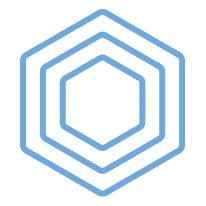Resources
This carefully curated collection of resources will help you find packages and learning resources to help you on your R journey.
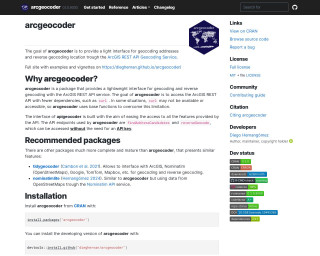
{arcgeocoder} package for geocoding
arcgeocoder is an R package that serves as a lightweight interface for geocoding and reverse geocoding using the ArcGIS REST API Geocoding Service. It allows R users to easily convert addresses to geographic coordinates and vice versa without needing an API key. The package is designed to work with base R functions, avoiding dependencies like curl, making it accessible in environments where curl isn't available. arcgeocoder is advantageous when quick and simple access to geocoding services is needed, and it includes functions like arc_geo() for geocoding and arc_reverse_geo() for reverse geocoding.
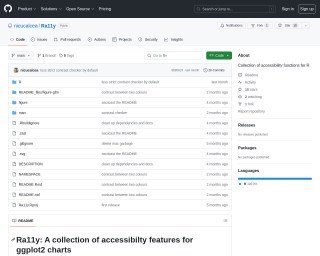
{Ra11y} package: Collection of accessibility functions for R
Ra11y is a public GitHub repository created by user nicucalcea, which hosts a collection of accessibility functions designed for R programming. The project aims to enhance accessibility within R and contains resources for developers to utilize these functions in their work. With 18 stars and 1 fork, the repository appears to be modestly popular within the community. The repository is fully coded in R and provides documentation to help users understand and implement the functions for their accessibility needs.
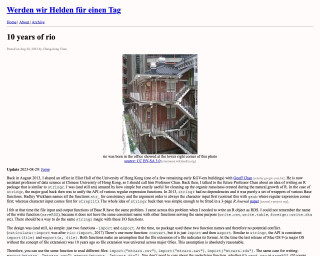
10 years of rio
This is a blog post titled '10 years of rio' by Chung-hong Chan. It discusses the history and development of the R language package 'rio', which is similar to stringr. The author talks about the motivation behind creating the package and the design principles used. The package provides functions for importing and exporting data in various formats, with a consistent API. The post also mentions the compatibility of the package with older versions of R.
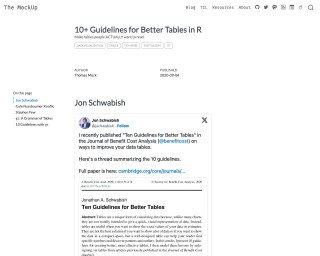
10+ Guidelines for Better Tables in R
The MockUp - 10+ Guidelines for Better Tables in R
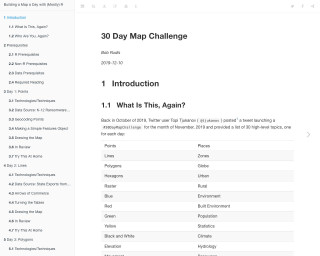
30 Day Map Challenge
Building a Map a Day with (Mostly) R is a 30-day challenge where each day, a map is created using R. The challenge covers various map types and techniques using different data sources. The tutorial provides step-by-step instructions on how to create each map and includes code examples. The challenge is suitable for those who are familiar with R and want to enhance their mapping skills.
3D city building maps with R - YouTube
This YouTube video is about creating 3D city building maps using R.
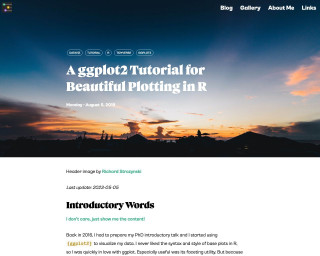
A ggplot2 Tutorial for Beautiful Plotting in R
A ggplot2 tutorial for beautiful plotting in R by Cédric Scherer
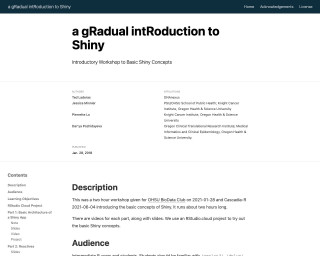
a gRadual intRoduction to Shiny
A gradual introduction to Shiny is a two-hour workshop that introduces the basic concepts of Shiny, a web application framework for R. The workshop covers the basic architecture of Shiny apps, how the server and UI communicate, adding ggplot2 code to an app, creating reactive datasets, and adding tooltips with plotly. The workshop is designed for intermediate R users and students familiar with ggplot2, dplyr, and functions.
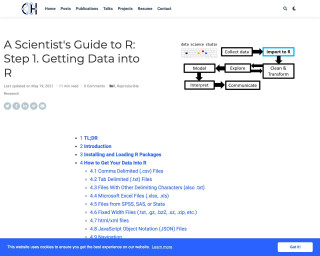
A Scientist's Guide to R: Step 1. Getting Data into R
A tutorial on getting data into R, covering various file formats like .csv, .txt, .xlsx, etc.
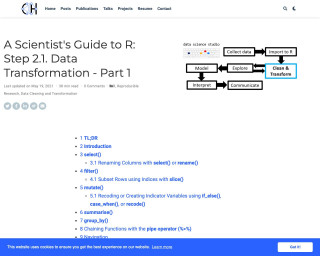
A Scientist's Guide to R: Step 2.1. Data Transformation - Part 1
This post is part of the Scientist's Guide to R series and focuses on data transformation techniques for wrangling, tidying, and cleaning data. It introduces the core functions of the dplyr package, as well as other relevant functions in base R. The post covers topics such as selecting columns, filtering rows, modifying columns, obtaining descriptive summaries of data, assigning grouping structures, and arranging data frames. The post also mentions the data.table package for working with large datasets. The examples in the post demonstrate how to use the select() function from the dplyr package to subset columns from a data frame.
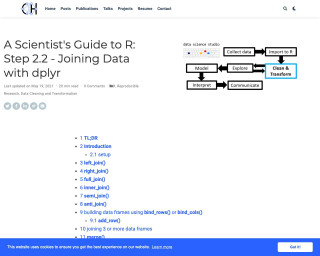
A Scientist's Guide to R: Step 2.2 - Joining Data with dplyr
This post is part of the Scientist's Guide to R series and focuses on using joins to combine data frames in R with the dplyr package. It covers different types of joins, such as inner, left, right, full, semi, and anti join, as well as using bind_rows() or bind_cols() to build data frames. The post also mentions the merge() function in base R for joining data frames.
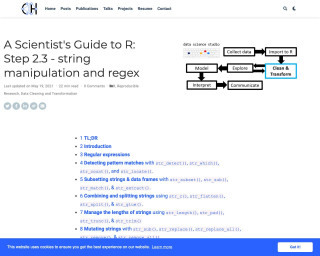
A Scientist's Guide to R: Step 2.3 - string manipulation and regex
A Scientist's Guide to R: Step 2.3 - string manipulation and regex
